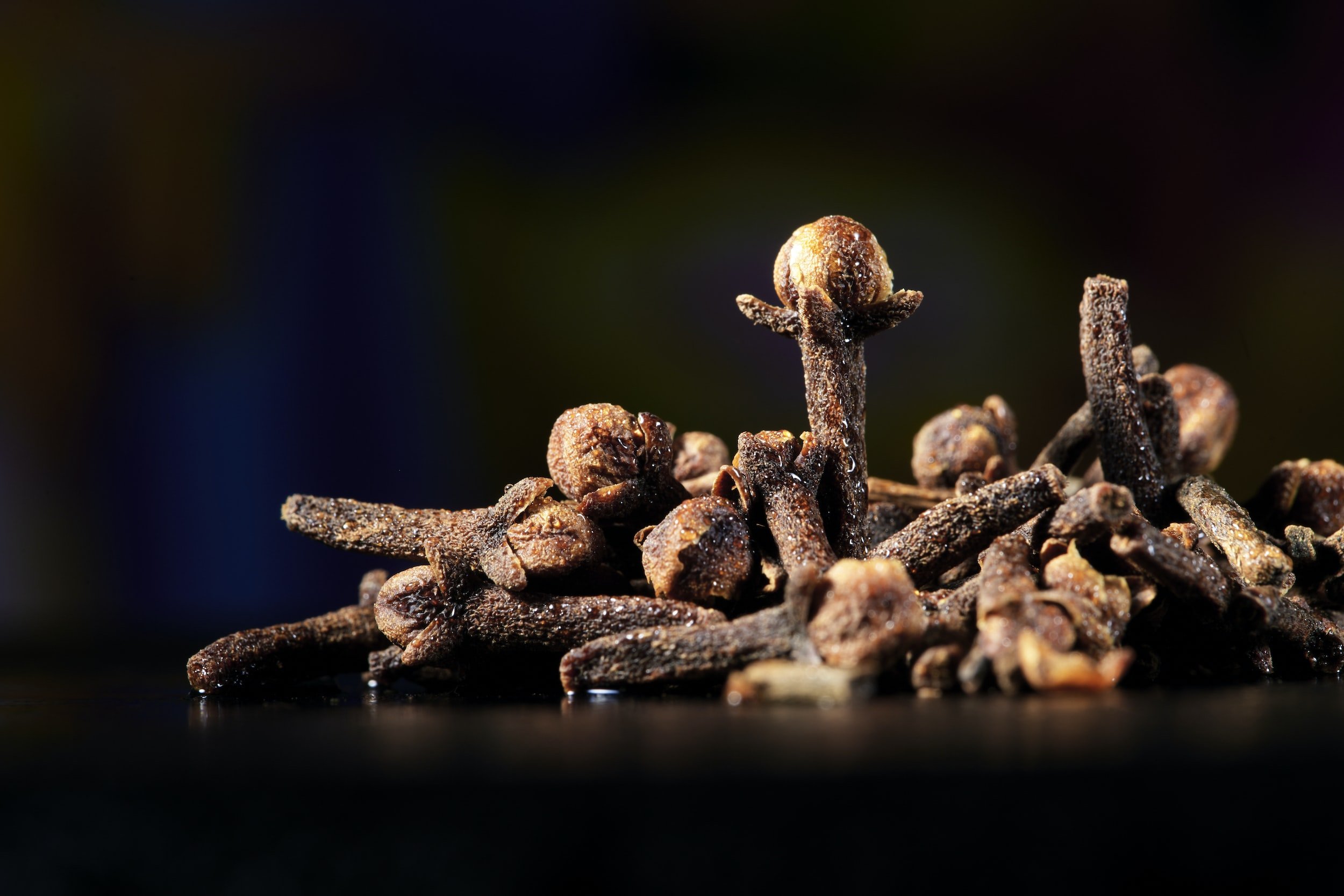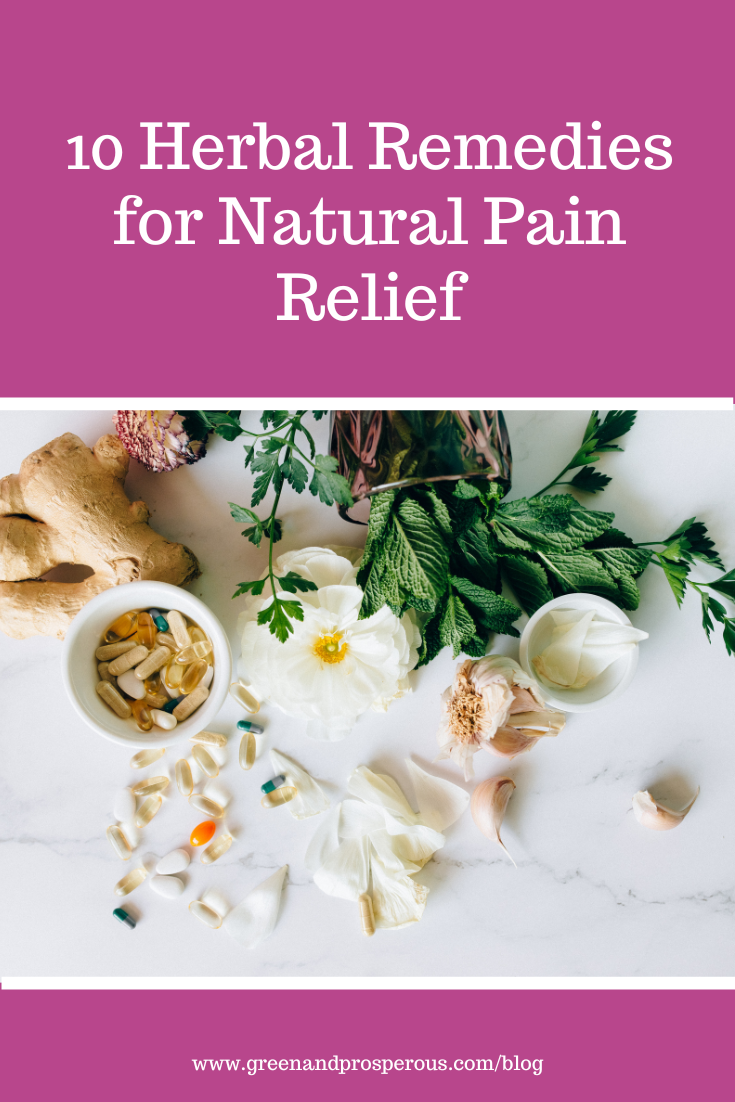10 Herbal Remedies for Natural Pain Relief
/According to a report published by the Centers for Disease Control and Prevention (CDC), nearly 50 million Americans have some sort of chronic pain.
Life can be challenging for people living with chronic pain.
The disappointment of not being able to carry out everyday tasks can trigger stress and anxiety, which can worsen the pain. While pharmaceuticals have always been a ray of hope, people are now interested in herbal treatments for natural pain relief. This is because allopathy medicine is subject to some side effects, while herbal medicine is more of a natural treatment with little to no adverse effects.
This article discusses some effective herbal remedies that can ease discomfort, provide pain management, and decrease inflammation in the body.
1. Devil's Claw
Devil's claw or Harpagophytum procumbens is an herbal plant used for chronic pain associated with tendonitis and rheumatoid arthritis. The plant is native to Southern Africa, where it has been traditionally used for decades for many conditions, including headache, pain, and heartburn.
It has chemicals that reduce swelling, which might also be the reason that it's used to treat pain and inflammation. However, pregnant women are not advised to use this herb.
2 Bromelain
Bromelain is a type of proteolytic enzyme found in pineapple juice and pineapple stem. It reduces the levels of prostaglandins, a group of hormones that control inflammation in the body and play both positive and negative roles in its functioning.
Many people use bromelain for its analgesic properties, as it also relieves joint stiffness related to osteoarthritis and soreness in aching muscles. It is equally effective in managing arthritis pain in the knee and shoulder. It is also used topically to treat dead skin from burns and swelling of the nasal passages.
The U.S Food and Drug Administration (FDA) has approved the herb as a dietary supplement and it is recognized as being safe for consumption.
3. Cannabis Strains
Numerous studies have indicated cannabis to be an excellent pain reliever. Even customers report the same. Strains like Harlequin, ACDC, and Cannatonic are commonly used to treat chronic pain and arthritis-related inflammation.
The most effective way to take these strains is to smoke through bongs or pipes. Alternatively, you can add some quantity of the strain into any food to make it edible. Other than pain relief, cannabis is also effective for managing anxiety-induced symptoms, including muscle tension, restlessness, and poor sleep.
Just be sure to go low and slow if you're a beginner with no experience in marijuana.
4. Turmeric
Curcumin is the main component in turmeric, which gives it its yellow color. It has anti-inflammatory properties, which is why people use it for an assortment of conditions, including reduced pain and increased range of motion in osteoarthritis. It can also help ease rheumatoid arthritis, like joint swelling and morning stiffness.
One study found that taking turmeric three times a day is comparable to 1200 mg of ibuprofen daily.
5. Ginger
Ginger is an aromatic spice; people have used it in traditional Asian medicine for centuries. It can help with a range of health conditions, including pain and swelling associated with osteoarthritis and rheumatoid arthritis.
A 2001 study showed that high concentrations of ginger extract were quite effective in managing osteoarthritis of the knee. Another study indicated that ginger is as effective as ibuprofen during the first treatment plan of a cross-over study.
6. White Willow Bark
White willow bark is an herbal supplement that is found in several varieties of the willow tree, such as white or Salix alba, black or Salix nigra, and purple willow. White willow contains an active ingredient, salicin, which has the same properties as aspirin. It helps treat pain and inflammation associated with arthritis.
Most people use willow bark for back pain, fever, flu, muscle pain, osteoarthritis, and other conditions. That being said, not much evidence has been shown to support the efficacy of this supplement.
7. Cloves
These are the dried flowers that come from the clove tree and are used as a spice for culinary purposes. Cloves are also used as herbal medicine as they have natural antibacterial and anti-inflammatory properties. They also help relieve pain and inflammation related to many chronic diseases.
Cloves have been used traditionally for centuries to treat teeth-and-gums-related problems, including throbbing toothache. This fresh-tasting spice contains vitamins C and K, calcium, and fiber. Cloves also contain a component called eugenol, which helps kill bacteria and relieve pain.
8. Capsaicin
Capsaicin is a compound found in chili peppers that gives them their hot and spicy flavor. The herb is believed to have pain-relieving properties. It's used via topical application in the form of creams, gels, and patches to treat pain-affected areas.
Experts suggest this compound works by depleting substance P, a compound that transmits signals of pain sensation from the peripheral to the central nervous system. If true, this means that capsaicin helps in reducing the perception of pain.
9. Feverfew
Feverfew, or Tanacetum parthenium, is a flowering plant native to Asia Minor and the Balkans. The plant's dried leaves, fresh leaves, and extracts are used in topical applications to deal with arthritis pain, fevers, and headaches.
It is also promoted as an antiseptic and insecticide as it helps with toothaches. Thanks to its therapeutic properties, feverfew has been called the 'aspirin of the 18th century'.
Research also indicates that feverfew can reduce migraine headaches and their symptoms including nausea, vomiting, and light sensitivity.
10. Glucosamine
Glucosamine is a naturally occurring compound in cartilage that forms joints. It is used in supplement form to bring relief from the painful symptoms of osteoarthritis and rheumatoid arthritis. Research suggests that glucosamine can help slow down knee joint degeneration linked with osteoarthritis. That being said, more detailed research is to study the benefits of glucosamine supplements for osteoarthritis of the spine, hand, or hip.
Studies also show that glucosamine might also relieve the pain associated with rheumatoid arthritis.
Like this? Please pin!
Bottom Line
Many studies have demonstrated the efficacy of these herbal compounds through thorough and sustained clinical research. While most of the herbs discussed in this article have been shown to ease pain and inflammation, the scientific community still demands a detailed study on this subject.
About the Author:
Olivia James is a senior content writer at Outreach Monks. James has been working with the company for the past three years and holds an expertise in health and cannabis writing. She likes to educate her audience on the health benefits of cannabis and its various compounds.









































